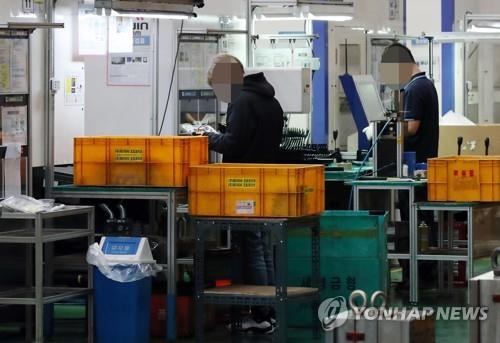- California Assembly OKs highest minimum wage in nation
- S. Korea unveils first graphic cigarette warnings
- US joins with South Korea, Japan in bid to deter North Korea
- LPGA golfer Chun In-gee finally back in action
- S. Korea won’t be top seed in final World Cup qualification round
- US men’s soccer misses 2nd straight Olympics
- US back on track in qualifying with 4-0 win over Guatemala
- High-intensity workout injuries spawn cottage industry
- CDC expands range of Zika mosquitoes into parts of Northeast
- Who knew? ‘The Walking Dead’ is helping families connect
Number of loss-making SMEs rises over 10 pct in 2017
SEJONG, Nov. 29 (Yonhap) — The number of loss-making small and medium-sized enterprises (SMEs) in South Korea increased more than 10 percent in 2017, government data showed Thursday, sparking concerns over their financial health down the road.
According to the data from the National Tax Service (NTS), 198,252 SMEs reported zero or negative income to the tax authorities last year, up 10.2 percent from a year earlier. The on-year increase rate was higher than the 9 percent gain recorded a year earlier.
The unprofitable SMEs accounted for 35.3 percent of all smaller firms that filed income tax returns to the NTS, up from 34.7 percent in 2016 and 34.4 percent in 2015.
Market watchers voiced concern that even a slight rise in expenses could turn those loss-making SMEs into marginal businesses unable to service their debts with earnings.

This undated file photo shows workers at a local small and medium-sized enterprise. (Yonhap)
A company failing to earn enough operating income to cover its interest expenses for three consecutive years is defined as marginal by local financial authorities.
With the possibility of a rate rise growing, they called on the government to keep close tabs on those smaller firms struggling from an economic slowdown.
The Bank of Korea (BOK) is slated to hold a monthly rate-setting session Friday, with some analysts predicting the central bank to hike its benchmark interest rate by a quarter percentage point.
Citing low inflationary pressure and weak signs of economic recovery, the BOK has maintained the base rate at 1.5 percent since November 2017, when it jacked up the rate from a record low of 1.25 percent for the first time in more than six years.











